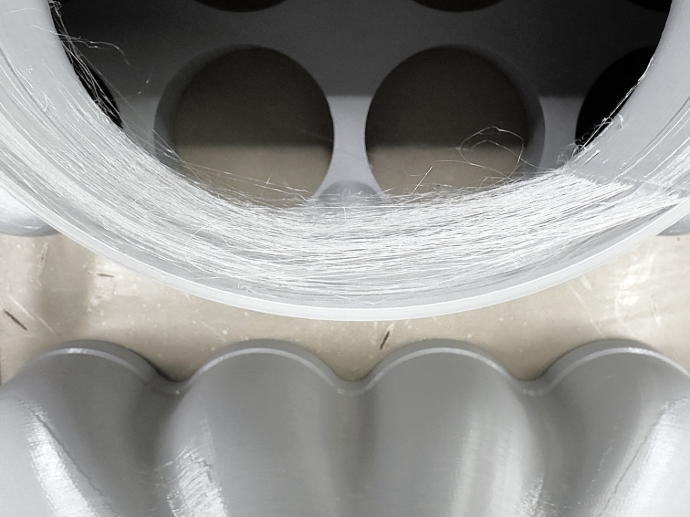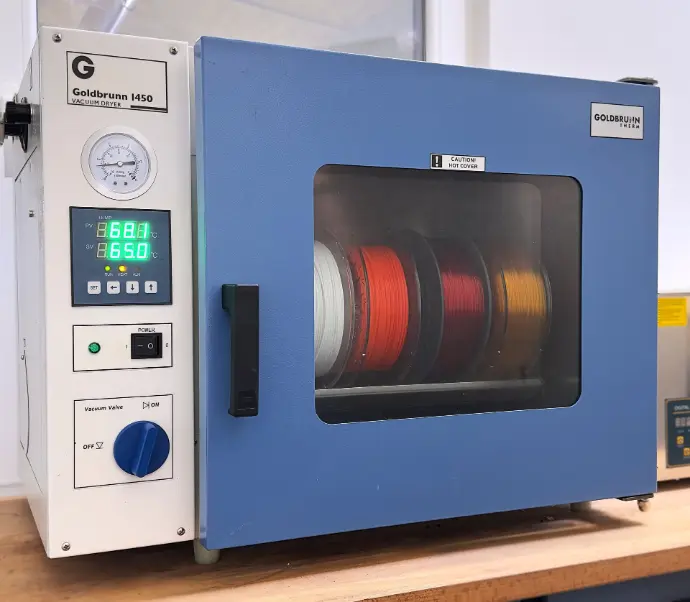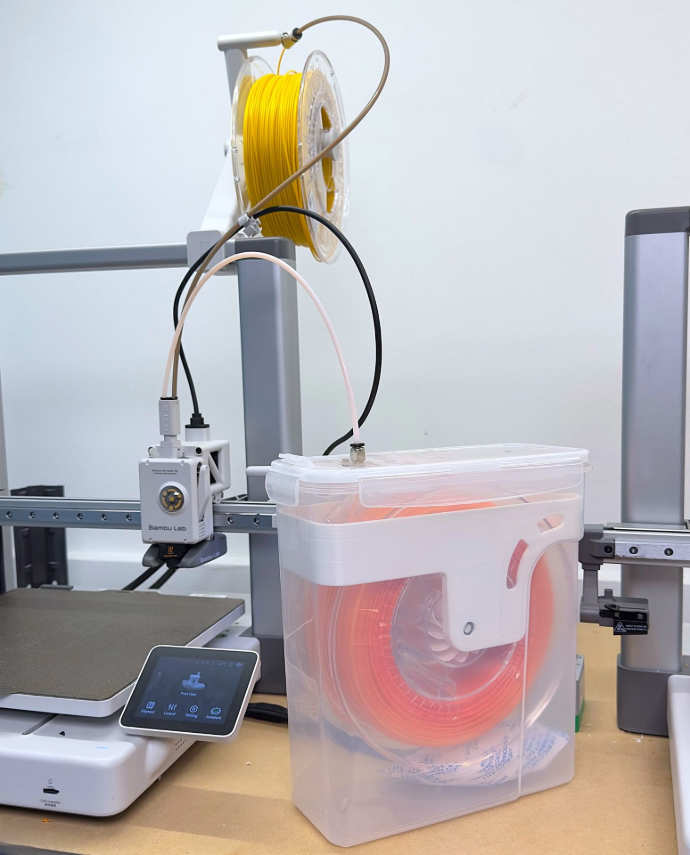PETG is a popular 3D printing material that combines the strength of ABS with the ease of printing of PLA. However, one of its challenges is its hygroscopic nature – PETG absorbs moisture from the environment, which can lead to printing defects. Proper drying of the filament before printing helps ensure high-quality prints without bubbles or poor layer adhesion.
How to identify moist PETG?
Typical signs of moisture in PETG include:
- Cracking and popping during printing
- Rough or uneven surface on the print
- Weak layer adhesion
- Bubbles in the extruded material
- Spider webbing effect (fine thin strings during printing)
If you notice these issues, it’s time to dry your filament.

PETG drying settings
The ideal drying temperature for PETG is 55 – 65 °C. Excessive heat can cause spool deformation, so
maintaining a consistent temperature is crucial.
Recommended Drying Methods:
- Filament Dryer – The best solution with precise temperature and time control.
- Convection Oven – A household oven can be used if it has precise temperature regulation.
- Food Dehydrator – Works well if the temperature can be set to the correct range.
- Vacuum Dryer – A professional solution that heats the material while reducing pressure,
accelerating and improving evaporation.

PETG drying procedure
- Preheat the drying device to 55 - 65 °C.
- Place the PETG spool into the drying unit.
- Dry for 4 - 6 hours for normally moist filament, and 8 - 12 hours for heavily moisture-absorbed material.
- Immediately store in an airtight container with a desiccant (silica gel) or in a vacuum-sealed bag.
Preventing moisture absorption
- Store PETG in airtight boxes with desiccants.
- Use vacuum-sealed storage bags for long-term storage; air can be easily removed using a vacuum cleaner.
- If possible, print from a sealed enclosure that prevents moisture absorption during printing.
Following these steps will ensure that your PETG maintains consistent printing properties and produces high-quality prints.


